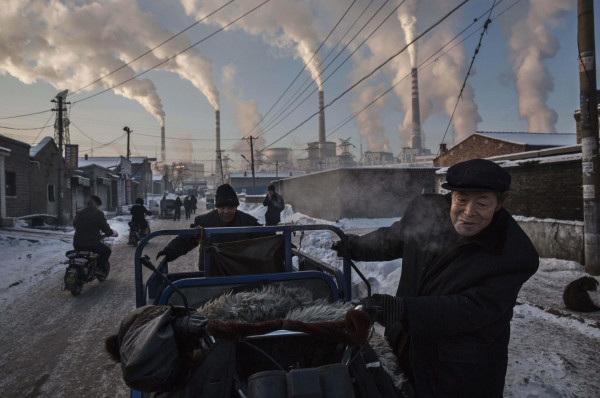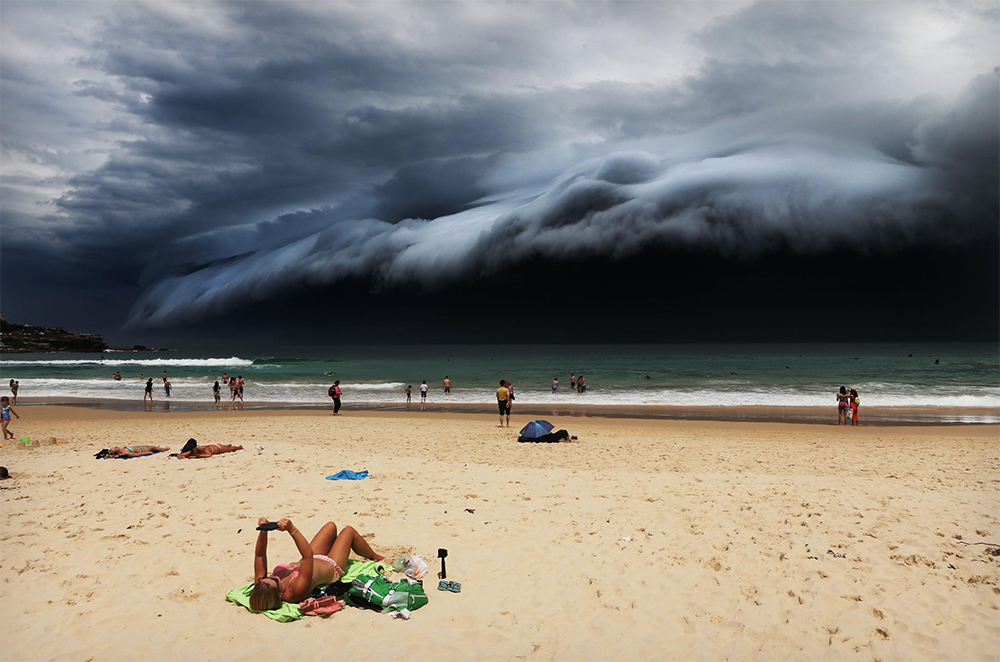Notes
Progress and Catastrophe at the World Press Photo Awards
The 2016 World Press Photo Awards were announced Thursday. As always, the awards are an occasion for marveling at the quality of contemporary photojournalism. And as always, they probably have prompted some controversy, although I would expect less of that this year. The winning photograph channels Robert Capa’s great D-Day photograph, while its black and white tonality and “you are there” action shot will allay concerns raised in the last few years about the presence of painterly or other explicitly aesthetic values.
A wide range of artistic inflection is still on display at the awards, however, and good thing, too. (Keep in mind that all the photographs are digitally altered–not least the black and white images, which have the color subtracted from the original raw file.) Photojournalism is a vital, vibrant public art, and the “82,951 photos made by 5,775 photographers from 128 different countries” will provide a rich archive of life on planet Earth today. Note also that this WPP quotation says the photos are “made,” not taken. The modernist assumption about transparent representation of the world finally is being replaced by recognition of the fact–and I would hope, value–of mediation.
From the look of the winners, it seems clear that the artistry that is on display brings us closer not only to the world as it is, but also to the world as it is unfolding from past to present to future. By putting two of the category winners side by side, we can see how this public art is challenging us to think about whether a global future will be one of progress or catastrophe.
The WPP caption of the image above says, “Chinese men pull a tricycle in a neighborhood next to a coal-fired power plant in Shanxi, China. A history of heavy dependence on burning coal for energy has made China the source of nearly a third of the world’s total carbon dioxide (CO2) emissions, the toxic pollutants widely cited by scientists and environmentalists as the primary cause of global warming.”
Put text and image image together, and you have a problem. Coal-fired plants in China needs to be replaced for the common good, right? Yes, but it’s cold in Shanxi. And that massive plant is helping people haul themselves out of centuries of poverty.
The caption refers to a tricycle, but motorbikes are there as well. Progress is there, but hardly at the level of Saudi elites living lavishly in London. It’s still a slog in Shanxi. The fact that the province is now an exhibit for deplorable labor conditions is one measure of where it is on the developmental scale. One question that arises is whether this is a photograph of how rural China is climbing the stages of industrialization toward First World prosperity, or of how the “temporary” costs of industrialization are now unacceptable because of permanent damage to the global ecosystem.
Which brings us to the photo’s artistry. Is it a photograph or a 19th century genre painting? Is it a photograph or a Soviet-era poster promoting industrialization? Both the painterly hues and the modernist iconography are key elements of the composition. The artistic implication is that this is a photograph of the past.
In Reading National Geographic, Catherine Lutz and Jane Collins made the astute observation that the ideology of progress sees the developing world is if “their present is our past” (p. 125). Many, many photographs have carried that message. With this photo, I’m not so sure. The the two men in the foreground are moving the non-motorized vehicle away from the power plants. The plants are being left behind, while the men are walking on a road that seemingly would become colder, harsher, more tiring. In place of electric heat, they will need that fur blanket that is draped over the trike. As in a genre painting, they become a portrait of a simple, agrarian life, albeit now one that comes after industrialization instead of before it. Progress is part of the picture, but it has become dangerous. The two men almost could be refugees. And perhaps they are.
But where might they go? How are things going in the advanced nations? The flip side of the Lutz and Collins observation is that those elsewhere could look at our present to see their future. But what if our present already contains another future, and one that no one would want?
The WPP caption of this photos says, “A massive ‘cloud tsunami’ looms over Sydney as a sunbather reads, oblivious to the approaching cloud on Bondi Beach.” Welcome to the affluent world: life is a beach, and better than that when you’ve also got your digital reader. Industrialization is somewhere off stage here, while global information technologies, consumer consumption, and warmth can be taken for granted. Taken for granted, that is, until you stop what you’re doing to look at what is coming.
Perhaps it’s just another storm. Weather, not climate change. A need to take shelter for awhile, not change the way you live. That is the difference between a literal reading of the photograph and seeing it as a work of public art. The photographs taken in 2015 record what is still a present moment, but they also can recall the past and reveal something of the future. A future, perhaps, that looms like a terrible, dark storm.
— Robert Hariman
(cross-posted from No Caption Needed.)
Photos: Kevin Frayer/Getty Images (WPP 1st prize singles, Daily Life) and Rohan Kelly/Daily Telegraph (WPP 1st prize singles, Nature)
.




Reactions
Comments Powered by Disqus